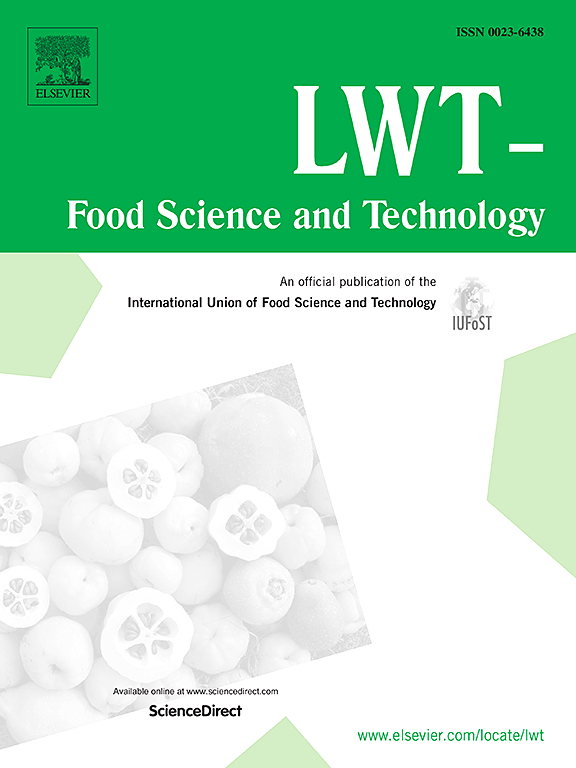Preparation and properties of binary complexes of zein and nuclei of whey protein isolate for emulsion stabilization
IF 6
1区 农林科学
Q1 FOOD SCIENCE & TECHNOLOGY
引用次数: 0
Abstract
The stability of Pickering emulsions tends to be restricted when single colloidal particles are used as the sole stabilizing agents. Herein, the potential of enhancing the performance of Pickering emulsions by utilizing a blend of zein nanoparticles and nuclei prepared from whey protein isolate was explored. The properties and the emulsions stability of the binary complexes were explored using scanning electron microscopy (SEM), fourier-transform infrared spectroscopy (FTIR), and confocal laser scanning microscopy (CLSM), et. Compared with the native zein nanoparticles, the zein-nuclei binary complex (Z-WpH2.0–2h) had a smaller particle size and higher zeta potential. Hydrogen bonding and hydrophobic interactions were the dominant forces involved in the formation of the Z-WpH2.0–2h binary complexes. Compared with the native zein nanoparticles, the Z-WpH2.0–2h binary complexes formed thicker and denser coatings around the oil droplets and resulted in smaller, more uniform emulsions. The Pickering emulsions prepared based on the Z-WpH2.0–2h binary complexes showed good stability across various pH and ionic strength conditions along with heating and freeze-thawing treatments. The binary complexes open up new possibilities for practical applications in food systems, such as, coating systems for enhanced product quality, and delivery systems for water-insoluble components like oil-soluble vitamins.
求助全文
约1分钟内获得全文
求助全文
来源期刊

LWT - Food Science and Technology
工程技术-食品科技
CiteScore
11.80
自引率
6.70%
发文量
1724
审稿时长
65 days
期刊介绍:
LWT - Food Science and Technology is an international journal that publishes innovative papers in the fields of food chemistry, biochemistry, microbiology, technology and nutrition. The work described should be innovative either in the approach or in the methods used. The significance of the results either for the science community or for the food industry must also be specified. Contributions written in English are welcomed in the form of review articles, short reviews, research papers, and research notes. Papers featuring animal trials and cell cultures are outside the scope of the journal and will not be considered for publication.
 求助内容:
求助内容: 应助结果提醒方式:
应助结果提醒方式:


